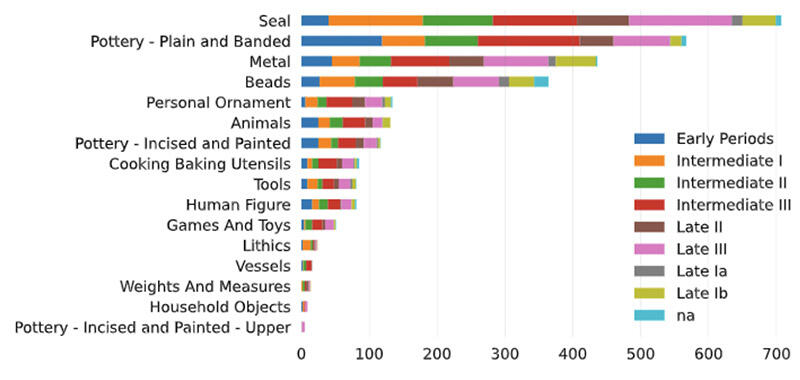Another example of how modern data science and the re-analysis of data collected by early archaeologists are opening new frontiers of discovery. In this case, finds made in one area of Mohenjo-daro, excavated by K.N. Dikshit, are being tabulated and located precisely in relation to other objects and the strata or level they were found at. "DK-G provides a rich information resource on the Mohenjo-Daro site. It features some of the most robust extant and contiguous architecture linked to alleys and major roadways; evidence for at least two-story houses as indicated by the tall shaft wells; distinct residential and potentially non-residential buildings; extensive waste and water management; bathing platforms. Excavations also provide the evidence of the rebuilding of walls, and artefact scatters over time that provide some indication of activity through time. Having been excavated over different times, DK-G has generated a range of information sources," write the authors (p. 4).
They continue: "this pilot project is based in the Laboratory for Integrated Archaeological Visualization and Heritage (LIAVH.org), which aims to create new possibilities for generating knowledge and new questions from previously excavated archaeological sites. Through digitizing archaeological data previously only available in analogue format and utilizing an array of data analysis and 3-D modelling techniques, M_LAB seeks to build information infrastructures that can facilitate insights, particularly for urban neighbourhood analysis. Utilizing query-able databases, M_LAB links data from excavation reports and archives to images and geospatial locations. By bringing together multiple lines of evidence, including architecture, infrastructure, artefacts, and temporal attributes, as well as creating an open source platform and data visualization, we hope to engender new ways of looking at the same data. In this article we present the methodology for our work to date on the documentation of the architecture, infrastructure, and artefacts from the neighbourhood DK-G South at Mohenjo- Daro."
From these tabulations, new insights are likely to emerge, new patterns in craftsmanship and development of specific goods and the behaviours that supported them.
Image: Number of artefacts through time, DK-G South, Blocks 4, 7, 9, and 10

